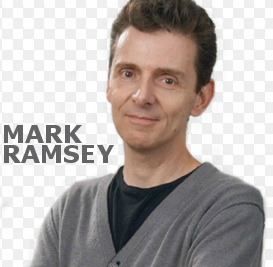 Guest columnist Mark Ramsey is a media strategist, research analyst, author, and producer of the annual Hivio audio future festival. This article was originally published on his Mark Ramsey Media website.
Guest columnist Mark Ramsey is a media strategist, research analyst, author, and producer of the annual Hivio audio future festival. This article was originally published on his Mark Ramsey Media website.
Remember when a toy was something somebody else made that you simply purchased? This week Mattel has announced a $300 3-D printer for kids that will set their imaginations free:
“Users upload design files via Mattel’s proprietary Design App, which works on Android or iOS devices, and can print parts to be assembled into toys. Terry Wohlers, founder and principal analyst at industry research firm Wohlers Associates, said “It should help to unlock the creative juices of our youth in a way that we have not seen in the past. Over a period of years, it could even help to reinvigorate careers in design and manufacturing here in the U.S.”
Remember when radio was something somebody else made that you simply listened to? Today radio is readily personalizable and interactive – even a form of Talk Radio.
But how many broadcasters really understand this trend, why it’s happening, and what it means?
While most people don’t want to stream their own station – to be their own broadcaster – more and more folks want to interact meaningfully with the brands they love.
Recently a client told me about a station that was on the verge of flipping to Christmas music for the holiday season. So they launched a contest: “Guess when we’re switching to Christmas music!” Because naturally, if I’m a self-obsessed broadcaster, it’s all about me.
This is not the kind of interaction I’m talking about. Consumers want to interact with their favorite brands for their reasons, not yours. For their benefit, not yours.
If it’s good for your brand it will be because it fulfills the desires of your consumers, not the other way around.
In this economy of ever-rising expectations, there are three key forces, as outlined in the book Trend-Driven Innovation: Beat Accelerating Customer Expectations: Rising quality (the idea that the proliferation of new products drives those surviving products to be ever better), positive impact (the idea that consumers want products and services that make their world a better place or at least create no harm), and personal expression (the idea that consuming your product makes me a better person who can not only have more, but can also be more).
Has the proliferation of competition made your brand better?
Does your brand enable your fans to make a positive impact on the world?
And does your brand have interaction opportunities which make me a better me?
Quoting the book:
“As material abundance becomes the norm, the drive to become the person they want to be – to embody their highest idea of themselves – becomes the key motivator of behavior.”
What in the world does this have to do with guessing when your station flips to Christmas?!
Mattel makes it possible for kids to bring their dreams to life. What does your radio station make possible for your audience?
Nike has been at the forefront of initiatives of this type. From real-world events where runners upload their training data via Nike+ to vending machines that access Fuelband Points as currency, Nike is all about enabling the quest for self-actualization. As one Nike digital executive noted: “People now demand us not to say ‘Just do it,’; they say, ‘Help me just do it – enable me to just do it.’”
How does interaction with your brands transform your audience into the people they want to be – their ideal selves? And how do you make it easy for fans to share that “ideal them” with their friends?
If you ask these questions next time you map out the experiences that will surround your brands (or what used to be called your “marketing”), you will come up with better, more effective ideas that make a real difference to the people who matter most: Your listeners.
